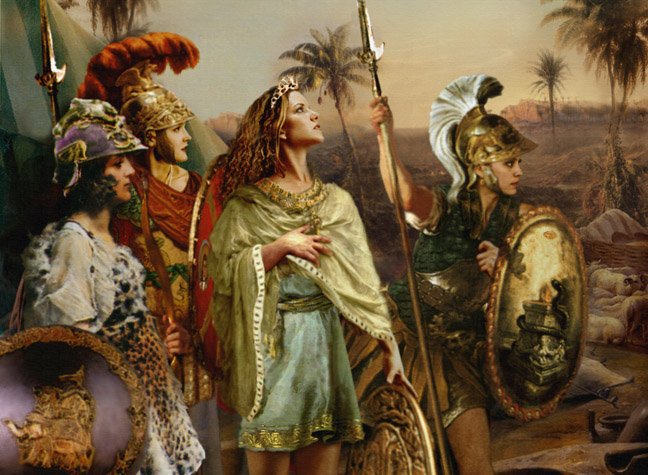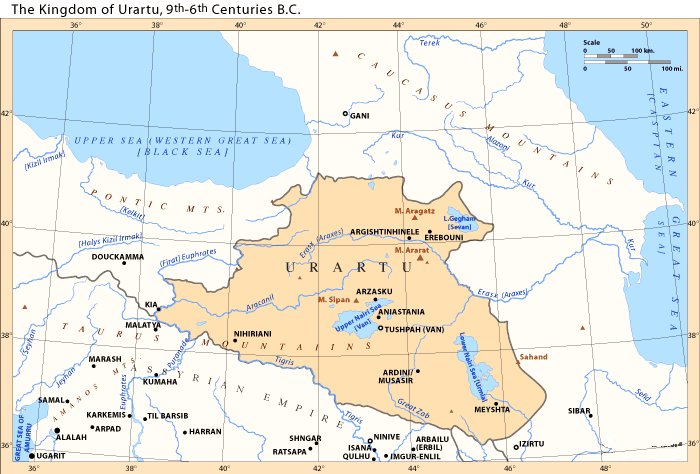Conny Waters – AncientPages.com – The lost Kingdom of Urartu is as mysterious and interesting as the Amazon warriors. Archaeological discoveries are slowly revealing the truth about the magnificent ancient kingdom that disappeared rapidly from history.
The latest discovery of an Amazon warrior unearthed in the Highlands of Armenia provides vital information that confirms the Amazons were real fierce female warriors who were just as courageous as males.

Ancient Greek authors wrote the Amazons were huntresses, founders of cities, rivals and lovers of adventurous men. They battled the Greek hero Heracles and fought alongside the Trojans in the final hours of Troy, but many have wondered whether the Amazons really existed.
The lost kingdom of Urartu is shrouded in mystery because very little is known about this ancient place and the origin of its people. The true origin of the people of Urartu is unknown. Some historians think these people migrated from somewhere to the west into the Armenian plateau, then for the most part known as Nairi.

Map of Urartu, 9th–6th centuries B.C. Credit: Public Domain, CC BY-SA 3.0
Several historians suggest the Kingdom of Urartu flourished in Armenia from the 9th to the 6th centuries B.C and the recent archaeology could strengthen this theory.
Writing in the International Journal of Osteoarchaeology, a group of Armenian researchers led by Anahit Khudaverdyan of the National Academy of Sciences of the Republic of Armenia detail their study
of a skeleton from the Bover I necropolis in Lori Province. According to their reports, the skeleton belongs to a woman who died during the Iron Age. She was about 20 years at the time of her death and her wounds strongly suggest she was an Amazon warrior.
Burial 17 from Bover I necropolis, Armenia. Credit: Anahit Khudaverdyan / National Academy of Sciences of the Republic of Armenia
Archaeologists found ceramic vessels and jewelry in her grave. At first, the objects gave the impression she must have had high-status in society. Late examinations showed several injuries which led scientists to think she was a warrior.
See also:
Amaga: Sarmatian Warrior Queen/Regent Who Impressed With Remarkable Military Skills
Excavations At Urartu Fortress Will Shed Light On Mysteries Of Ancient Temple
Mysterious 3,000-Year-Old Underwater Urartu Castle Discovered
The woman’s muscle attachments in her upper body were strong, “indicating considerable work activity,” the archaeologists write in their study.
Researchers also observed her thigh bones were also well-developed with pronounced gluteal muscles, possibly “related to specific military activities, such as horse-riding,”
She had been stabbed in her lower left leg and had multiple other injuries that had been inflicted shortly before her death. According to scientists she died in battle.
“It seems probable that there were indeed female warriors amongst the tribes of the Caucasus,” they suggest, concluding that their “ongoing discoveries do suggest the subsistence of real women warriors whose lives matched the descriptions of Amazons in Greek myths.”
See also: More Archaeology News
At the site of Qarashamb, in the Armenian highlands, scientists have discovered five other similar warrior graves, but they belonged to males. Researchers explain this particular burial from Bover I is good evidence that shows men and women fought together against intruders such as the Scythians.
Written by Conny Waters – MessageToEagle.com – AncientPages.com Staff Writer







